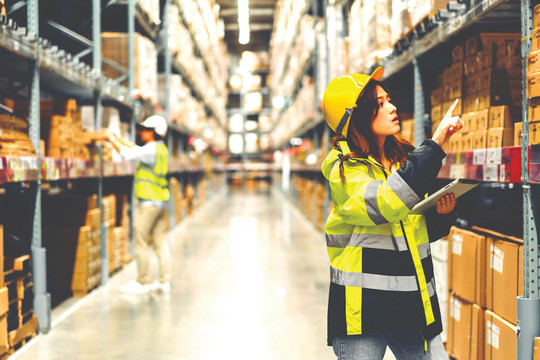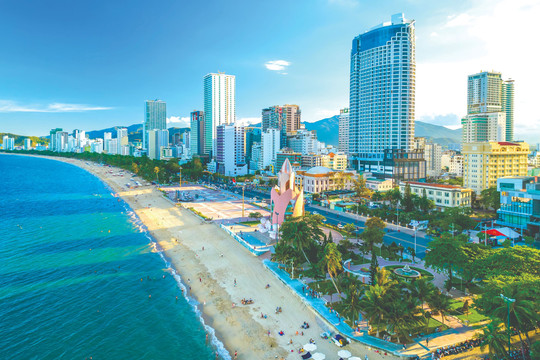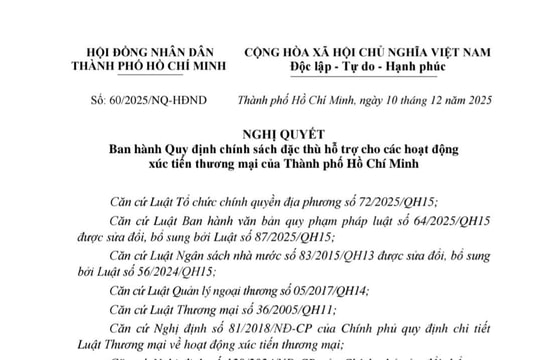A role model for developing countries
International economic integration is a major, important, and continuous orientation in Vietnam's comprehensive renewal process. In recent years, Vietnam has actively and wholeheartedly participated in multilateral and regional economic frameworks, with significant milestones such as joining the Association of Southeast Asian Nations (ASEAN) in 1995, being a founding member of the Asia-Europe Meeting (ASEM) in 1998, and becoming a member of the Asia-Pacific Economic Cooperation (APEC) forum in 1998. The most notable achievement was Vietnam's accession to the World Trade Organization (WTO) in 2007, marking comprehensive integration into the global economy.

To date, Vietnam has become one of the world's top 20 economies in terms of international trade and has implemented about 100 bilateral and multilateral trade agreements, along with more than 60 investment promotion and protection agreements.
As of May 2023, Vietnam has established a network consisting of 15 effective Free Trade Agreements (FTAs) and is negotiating four more FTAs, along with economic and trade cooperation frameworks with leading economic centers.
It can be said that these FTAs have opened market opportunities for Vietnam's exports, providing opportunities for Vietnam to further connect and participate in global value chains and production networks. Among them, the new generation FTAs such as the EVFTA, CPTPP, and UKVFTA are considered "antidotes" for Vietnam's post- pandemic economic recovery.
Dr. Ngozi Okonjo-Iweala, the Director-General of the WTO, during her official visit to Vietnam in mid-May, stated that Vietnam's continuous growth and development over more than a decade since becoming a WTO member, particularly during a period of global turmoil, is a remarkable achievement. She also emphasized that Vietnam has always been a role model for developing countries.
Strengthening logistics solutions
Comprehensive international integration strategy by 2020, vision towards 2030
of the Government (Decision No. 40/QD-TTg, dated January 7, 2016) affirmed
the commitment to enhance institutional reforms, administrative reforms;
continuously improve the investment environment to attract foreign investment,
linking investment attraction with monitoring the implementation process,
ensuring economic security, and socio-economic-environmental effectiveness;
accelerate the process of restructuring public investment, encourage private
investment activities and public-private partnerships; increase interprovincial
and interregional linkages; implement integration activities in the financial and monetary sectors according to the country's
development requirements and level.
.jpeg)
At the Logistics Forum for Europe and the Americas 2022, in the opening speech, Deputy Minister of Industry and Trade Do Thang Hai affirmed that thanks to the attention of the Government and the efforts of the business community, Vietnam's logistics sector has made significant progress. Logistics is also one of the fastest-growing and most stable sectors with an average annual growth rate of 14-16%, contributing 4-5% to GDP. According to the 2022 Emerging Markets Logistics Index report published by Agility, Vietnam ranks 11th in the Top 50 emerging logistics markets, and 4th in the Southeast Asian region.
According to statistics, as of 2022, Vietnam’s export turnover has increased nearly eightfold compared to when Vietnam officially joined the WTO in early 2007 (reaching $371 billion in 2022 compared to $48 billion in 2007). Foreign direct investment (FDI) reached about $22.4 billion, and the GDP growth rate has remained high compared to the global average, even during the pandemic. Vietnam is the fastest-growing brand value country in the world in the 2020- 2022 period, currently reaching $431 billion.
For the Europe and Americas region, it is known as an important market area and the location of Vietnam's leading trading partners such as the United States (the largest), the European Union (the third largest), and many other important and potential partners. In 2021, the trade turnover between Vietnam and the Europe- Americas region recorded an impressive growth rate of nearly 21%, reaching nearly $212 billion. Despite the global economy facing numerous difficulties and challenges, high inflation, and geopolitical competition among major countries negatively affecting global trade flows, by the end of November, trade turnover continued to show good growth, at 11.8%, reaching $212 billion, with exports reaching $171 billion, an increase of nearly 16%, and a trade surplus to the region exceeding $128 billion.
However, according to Deputy Minister Do Thang Hai, Vietnamese enterprises still face many difficulties when conducting trade with the world in general. These include issues such as limited and inadequate infrastructure, especially transportation infrastructure and logistics infrastructure such as warehouses, logistics centers; overlapping customs procedures; logistics enterprises lacking information; insufficient connectivity and outdated technology application. These are significant limitations that keep Vietnam's logistics costs at a high level, burdening businesses Ms. Vo Thi Phuong Lan, Vice Chairwoman of the Ho Chi Minh City Logistics Association (HLA), stated that the average logistics cost in Vietnam is currently around 16.8 - 17% of the value of goods. However, in reality, some businesses have to pay up to 20 - 25% for this cost.
.jpeg)
Dr. Ngozi Okonjo-Iweala, the Director-General of the WTO, during her official visit to Vietnam in mid-May, stated that Vietnam’s continuous growth and development over more than a decade since becoming a WTO member, particularly during a period of global turmoil, is a remarkable achievement. She also emphasized that Vietnam has always been a role model for developing countries.
In addition, according to experts, there are still many challenges for Vietnam's export and logistics businesses in 2023, as they have to face the consequences of inflationary pressures and the economic recession risks of major economies, leading to a decline in export orders in key export markets such as the United States, EU, etc. The Covid-19 pandemic, ongoing geopolitical conflicts, and their potential negative impacts on trade flows and global investments can cause supply chain disruptions and disrupt container transport routes, especially in the Europe-Americas region. Moreover, a new concern for the global transportation industry is the surplus of containers currently occurring at many major ports worldwide.
To minimize difficulties and risks for Vietnam's export and logistics businesses, many industry experts believe that companies need to have a solid understanding of customs regulations and procedures to proactively facilitate customs clearance for import and export goods. They also recommend optimizing logistics costs to enhance competitiveness for export products and leveraging the well-connected networks of foreign transportation companies to open up new and efficient transport channels for Vietnamese exports worldwide.
Therefore, it is evident that logistics solutions play a crucial role in maintaining sustainability, enhancing supply chain resilience, and improving competitiveness for businesses, opening doors for many of Vietnam's export sectors.





.png)
.png)
.png)


.png)
.png)






.png)

